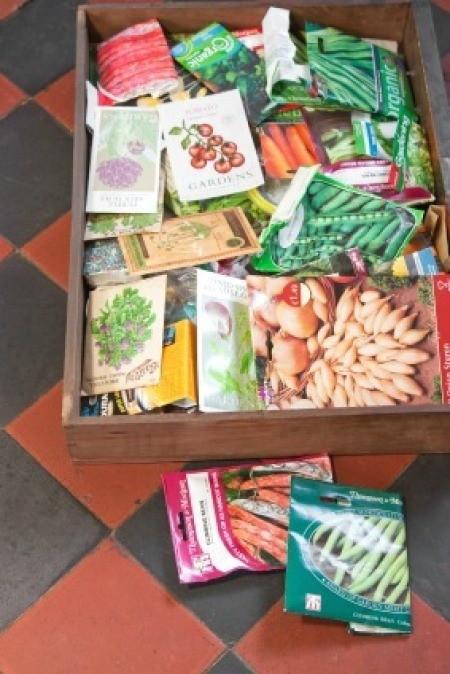Have you ever wondered what the difference is between a cultivar and a variety? How about the difference between an open-pollinated seed vs. an F-1 hybrid? These are just some of the confusing technical terms that you are likely to come across when shopping for garden seeds. Whether you buy seeds from a catalog or purchase them from a store, understanding what these terms mean will help you make more informed decisions when buying garden seeds.
Cultivar: A cultivar (cultivated variety) is bred to have certain characteristics that can be maintained by vegetative propagation. These characteristics don't occur naturally on their own. The name designation usually appears in a single quote after the genus and species name and is not italicized. In this Morning Glory example: Ipomoea Purpurea 'Grandpa Ott's', the cultivar name is 'Grandpa Ott's.' Seed-grown cultivars usually need to be propagated by vegetative means as their seeds will not "grow true" to the parent plant if saved and grown the following year.
Variety: The term variety refers to a distinct change in a plant strain that distinguishes it from all other similar strains within the same species. These changes occur naturally, through cross-pollination, mutation and adaptation (e.g. an orange variety is discovered of a plant known only to produce yellow flowers.) Variety names appear after the genus species name, usually have the abbreviation var.
Heirloom: Heirloom plants are time-tested varieties that have been passed down through generations of gardeners for their flavor, vigor, hardiness, and reliability. Most heirloom seeds are open-pollinated varieties, although today some commercial producers also classify cultivated varieties developed before the 1940s or 50s as heirlooms. Seed saved from an open-pollinated heirloom produces plants with the same characteristics as the parent plant.
Hybrid (F1): Hybrids occur when a breeder selects two pure lines (plants that produce identical offspring when self-pollinated) and crosses them to produce a seed that combines the most desirable "traits" of both parents-for example, disease resistance, uniformity, nutrition or color. "F1" refers to the first generation of offspring produced by this cross. Hybrid seeds are usually more expensive than non-hybrid seeds, because the production methods used to produce them are complex and costly to maintain.
Open-pollinated (OP): This term refers to seeds produced from plants which are allowed to pollinate naturally-by means of self-pollination, insects, wind, and water. Seeds saved from open-pollinated varieties and grown in the following years will "come true," meaning that the plants will have the same characteristics or "traits" as the parent plant from which the seeds were harvested. Keep in mind, however, that both the wind and insects may pollinate different open-pollinated varieties within close proximity to one another, so unless carefully controlled, you may occasionally get some odd results.
Pelleted: Pelleted seeds are encased in a round pellet made from an inert material like clay in order to bulk them up and make them easier to handle. The seeds may also be "primed" -given a hydration treatment that brings the seeds to the brink of germination before being dried for storage and distribution. The process of "priming" seeds increases the rate of germination, but decreases shelf-life, so be sure to use these seeds the same season you purchase them.
Treated: Seeds that are labeled "treated" are usually coated with some type of fungicide, herbicide, fertilizer, or growth hormone. You will need to check the packaging for specific details. Currently, seeds labeled "Certified Organic" are prohibited from being "treated", although as new biological treatments become available, this is likely to change.
Native: Native plants are open-pollinated varieties of plants that live or grow naturally in a particular region without human (direct or indirect) intervention. They are typically resistant to drought and disease and are hardier than cultivated species that have been bred to grow in the same environment.
Organic Seeds: The words "Certified Organic" on a seed packet have a distinct legal meaning. This designation can only be used for seed from growers who are in compliance with regulations set up by the USDA's National Organic Program. In the United States, this means the seeds are not genetically engineered or irradiated, and that they are produced without the use of sewage sludge, synthetic fertilizers, and pesticides.

About The Author: Ellen Brown is an environmental writer and photographer and the owner of Sustainable Media, an environmental media company that specializes in helping businesses and organizations promote eco-friendly products and services.
Add your voice! Click below to comment. ThriftyFun is powered by your wisdom!